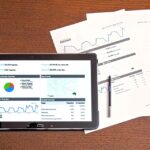Email marketing is one of the most effective ways to reach your target audience and turn them into loyal customers. However, sending out individual emails to each subscriber can be time-consuming and overwhelming, especially as your list grows. That’s where email automation comes in – it allows you to send targeted messages to your subscribers based on their behavior and interests. Here are 10 email automation tips to boost your marketing strategy without being spammy:
1. Segment your list: One of the most important steps in email automation is creating segments based on subscriber behavior, interests, and demographics. This allows you to send targeted messages that are more likely to resonate with your subscribers.
2. Personalize your emails: Personalization goes beyond using the subscriber’s name. You can create personalized messages based on their past behavior, purchase history, and preferences. Personalized emails have a higher chance of being opened and clicked.
3. Set up triggered campaigns: Triggered campaigns are automated messages that are sent based on a specific action or behavior. For example, sending a welcome email after someone signs up, or a follow-up email after they make a purchase.
4. Use dynamic content: Dynamic content allows you to display different content within the same email based on the subscriber’s preferences or behavior. This can be used to show personalized product recommendations or promotions.
5. Optimize your subject lines: Your subject line is the first thing your subscriber sees, so it’s important to make it compelling. Test different subject lines to see what resonates best with your audience.
6. Test and optimize your emails: A/B testing allows you to test different elements of your emails (such as subject lines, content, and CTAs) to see what resonates best with your audience. Use this data to optimize your emails for better results.
7. Use a clear call-to-action: Your call-to-action (CTA) should be clear and compelling. Use action-oriented language and make it easy for your subscribers to take the desired action.
8. Monitor your email performance: Keep an eye on your email performance metrics (such as open rates, click-through rates, and conversions) to see what’s working and what’s not. Use this data to make informed decisions about your email strategy.
9. Automate your email workflows: Creating automated email workflows can help you save time and streamline your email marketing efforts. For example, you can set up a workflow to send a series of emails to subscribers who abandon their cart.
10. Provide value to your subscribers: Ultimately, your subscribers want to receive emails that are valuable to them. Provide helpful tips, exclusive content, and special promotions to keep them engaged and loyal.
In conclusion, email automation can be a powerful tool for boosting your marketing strategy. By segmenting your list, personalizing your emails, and using triggered campaigns, you can create targeted messages that resonate with your audience. Use these tips to optimize your email marketing efforts and provide value to your subscribers without being spammy.




